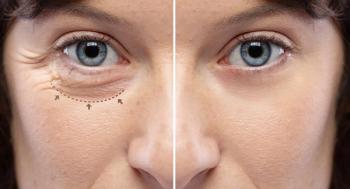
Exploring wider role for premium IOL implantation in glaucoma patients
When it comes to recommending a premium IOL, a patient’s glaucoma is only one factor to consider. Just like any other patient planning cataract surgery, visual needs and preferences for/against glasses are also important factors.
Reviewed by Richard A. Lewis, MD
Patients with glaucoma who need cataract surgery are no different than similar patients without glaucoma: Both groups expect a full range of vision after cataract surgery; neither group wants to be dependent on glasses, and both groups should be offered the most appropriate range of premium IOLs to meet those expectations.
“From the patient’s perspective, it’s all about the outcome,” said Richard A. Lewis, MD, co-founder of Sacramento Eye Consultants, Sacramento, CA.
“For the surgeon, managing all aspects of their refractive needs should be the obvious course,” Dr. Lewis said. “The premium lens-the right premium lens-has tremendous value in glaucoma.”
Premium IOLs in glaucoma
Cataract surgery is the most common surgical procedure used in patients with glaucoma, as well as the safest and most effective procedure for restoring vision, Dr. Lewis noted.
The surprise, he said, is just how few glaucoma specialists complete cataract surgery by implanting a premium IOL.
When it comes to recommending an IOL, the status of the patient’s glaucoma is only one factor to consider. Just like any other patient planning cataract surgery, visual needs and preferences for or against glasses are the most important factors.
Ask the right questions
All of the usual questions about work and lifestyle apply regardless of the presence or absence of glaucoma. Always ask patients what they do for a living and what they do for fun, Dr. Lewis advised.
Also, ask if they do close-up detail work, such as needlework.
It is just as important to explore their attitudes and preferences for glasses. Do they mind wearing glasses? Do they hate taking glasses on and off? The answers help shape IOL recommendations.
Traditional spherical IOLs offer monofocal vision. While traditional IOLs are less expensive than premium lenses, traditional lenses also provider less satisfactory visual outcomes compared with premium choices.
Too many glaucoma specialists forget that the premium IOL category includes several types of lenses. Each type of IOL offers a different combination of advantages and disadvantages that can make it more-or less-suitable for specific patients.
Candidate selection is vital
Good patient selection is the key to both surgical success and patient satisfaction.
“For some ophthalmologists, ‘premium lens’ just means one thing, a multifocal lens,” Dr. Lewis said. “The premium lens category also includes aspheric lenses, accommodating lenses, and toric lenses. The bottom line is doing what is best and safest for the patient.”
Simply moving from a spherical IOL to an aspheric lens can improve contrast sensitivity by 25%. The improvement is especially notable in nighttime situations where high contrast is the norm.
Multifocal IOLs cause a decrease in contrast sensitivity, especially for refractive-rather than diffractive-lenses.
Multifocal IOLs also degrade the visual image by consolidating multiple focal points.
Patients often ask for multifocal lenses to maximize their freedom from glasses after surgery. As long as the visual field is intact, multifocal image degradation is no more of a problem in the setting of glaucoma than in non-glaucomatous eyes.
For patients with more advanced glaucoma and who have already suffered visual field loss, multifocal lenses are probably not the ideal choice, Dr. Lewis said.
Patients with intraocular hypertension but no field loss may be candidates for a multifocal IOL, but multifocal IOLs should generally be avoided in patients with glaucoma who have cupping and/or visual field loss.
Toric and accommodative IOLs do not induce a loss of contrast sensitivity, Dr. Lewis noted, which gives them an advantage in visual acuity over multifocal lenses. For most patients with glaucoma, a toric IOL is probably the best overall choice to maximize the refractive correction.
“The toric lens manages astigmatic needs,” Dr. Lewis explained. “Glaucoma patients may have astigmatism naturally or from a previous glaucoma surgery. There are a few contraindications, but the vast majority of patients with glaucoma are good candidates for a toric lens.”
Who might be poor candidates?
Pseudoexfoliation is the most common contraindication to a toric IOL, he continued.
Patients with zonular weakness are also poor candidates for a toric IOL because the lens is more likely to rotate after implantation. For patients with less than 1 D of astigmatism, astigmatic keratotomy-with or without a femtosecond laser-may be a viable alternative to a toric lens.
“Premium IOLs, especially toric IOLs, offer significant advantages for patients with glaucoma,” Dr. Lewis said. “But as with any lens, patient selection is key to achieving the best possible outcome.
“At the end of the day, our real job is to get patients the best possible vision we can,” he added. “For the vast majority of patients, a premium IOL is the most effective way to deliver on that promise.”
Richard A. Lewis, MD
This article was adapted from Dr. Lewis’ presentation during Glaucoma Day at the 2017 meeting of the American Society of Cataract and Refractive Surgery. He is a consultant to Advanced Visual Science, Aerie Pharmaceuticals, Alcon Laboratories, Allergan, CenterVue, Glaukos, and Ivantis.
Newsletter
Don’t miss out—get Ophthalmology Times updates on the latest clinical advancements and expert interviews, straight to your inbox.










































